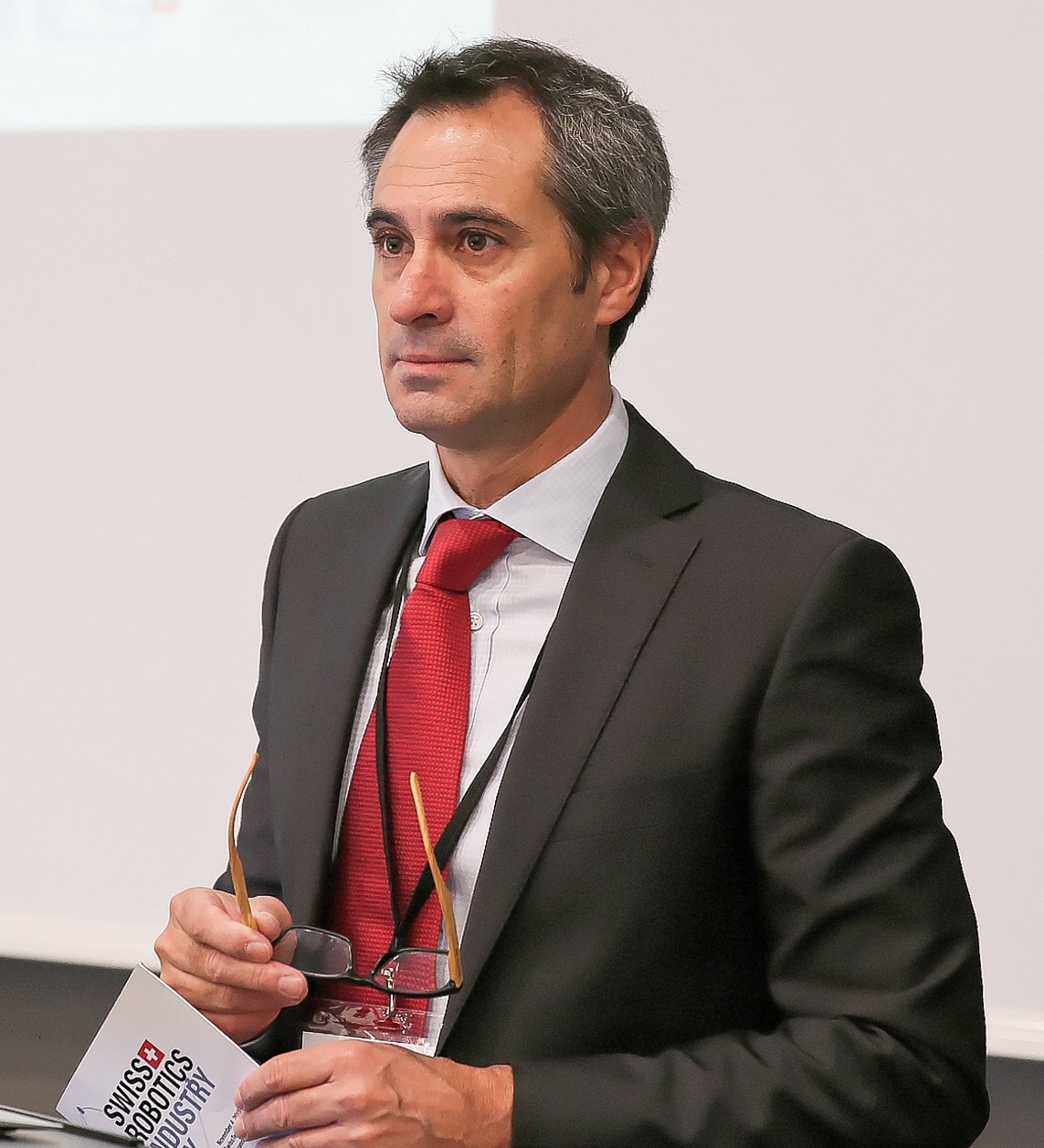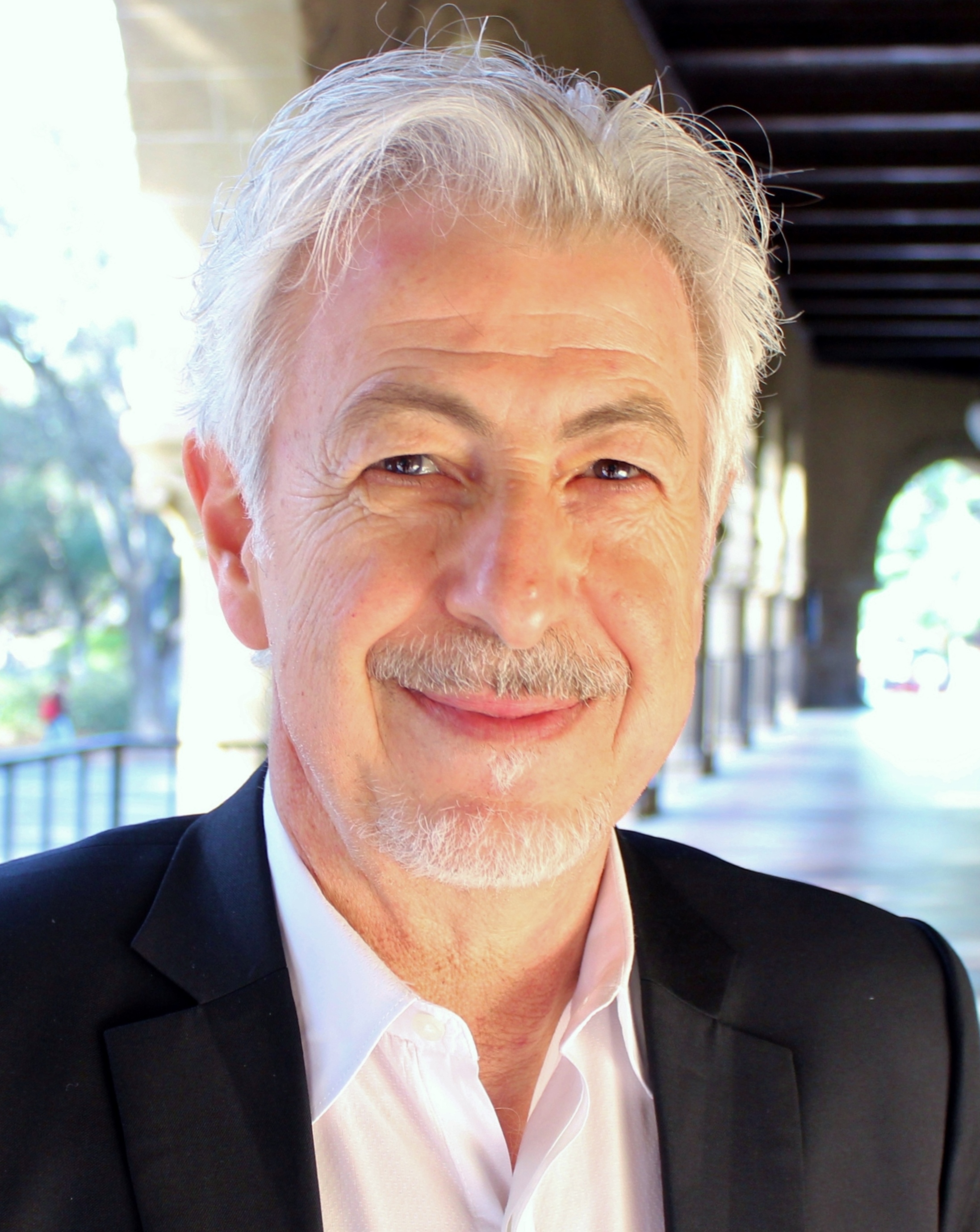Conferencia: "Indoor localization and tracking: from theoretical foundations to practical applications"
Conferenciante: Dr. Davide Dardari
IEEE Distinguished Lecturer
Universidad de Bolonia
Fecha y hora: 28 de Junio de 2018, de 10:00 a 12:00 horas
Lugar: Sala Juan Larrañeta, planta Ático de la E.T.S. de Ingeniería
Más Información: DOCUMENTO PDF
CONFERENCIA
Prof. CARLOS CANUDAS-DE-WIT
Towards Scale-Free Control of large-scale traffic networks
Fecha: Martes 13 Febrero 2018 Hora: De 12.00 a 14.00.
Lugar: Sala de Juntas. Planta 2. (Será impartida en castellano).
Human-Robot Cooperation with Torque-Controlled Light-Weight Robots in the Context of Future Manufacturing and Personal Assistance

Alin Albu-Schäffer
Head of the Institute of Robotics and Mechatronics at the German Aerospace Center (DLR).
Abstract:
Industry 4.0 stays for a manufacturing concept which fully exploits the online digital interconnection between all participants in the manufacturing process, from supplier over CAD developer to the production work-floor, including product components and machines. But digitalization currently also revolutionizes healthcare.
In this context it is expected that robots, which can directly exploit the digital data, will play an increasingly large role. However, automation alone still lacks flexibility in complex manufacturing processes such as the final assembly in automotive industries. Same holds for healthcare support for the aging society, were the complexity and variety of tasks does not afford full autonomous solutions. Therefore, human-robot collaboration is a currently seen as a very promising alternative for the near future.
In this talk I will address several aspects of human-robot collaborative industrial manufacturing and healthcare, starting from light-weight robot design over compliance, interaction and safety control up to new programming and application design aspects.
Short bio:
Alin Albu-Schäffer received his M.S. in electrical engineering from the Technical University of Timisoara, Romania in 1993 and his Ph.D. in automatic control from the Technical University of Munich in 2002. Since 2012 he is the head of the Institute of Robotics and Mechatronics at the German Aerospace Center (DLR), which he joined in 1995 as a Ph.D. candidate. Moreover, he is a professor at the Technical University of Munich, holding the Chair for “Sensor Based Robotic Systems and Intelligent Assistance Systems” at the Computer Science Department. His personal research interests include robot design, modeling and control, nonlinear control, flexible joint and variable compliance robots, impedance and force control, physical human-robot interaction, bio-inspired robot design and control. He received several awards, including the IEEE King-Sun Fu Best Paper Award of the Transactions on Robotics in 2012, several ICRA and IROS Best-Paper-Awards as well as the DLR Science Award.
Soft Robotic Technologies for Safe, Robust, Smart Drones

Dario Floreano
Director of the Laboratory of Intelligent Systems, EPFL, Switzerland
Director of the Swiss National Center of Competence in Robotics, Switzerland
Abstract:
We are witnessing the advent of a new era of robots — drones — that can autonomously fly in natural and man-made environments. These robots have a major impact on civilian tasks, including transportation, communication, agriculture, disaster mitigation and environment preservation. However, autonomous flight in confined spaces and near humans presents great scientific and technical challenges owing to the perceptual intelligence required to negotiate complex environments and to the safety requirements. Here I will show examples of soft robotics technologies that can improve the perceptual capability, safety, and usability of drones in civilian applications.
Short bio:
Prof. Dario Floreano is director of the Laboratory of Intelligent Systems at the Swiss Federal Institute of Technology Lausanne (EPFL). He is also founding director of the Swiss National Center of Competence in Robotics, which sponsors almost 60 researchers in wearable, mobile, and educational robots from 20 robotics labs across Switzerland. Prof. Floreano holds an M.A. in visual psychophysics, an M.S. in Neural Computation, and a PhD in Robotics. He held research positions at Sony Computer Science Laboratory, at Caltech/JPL, and at Harvard University. He is interested in robotics and A.I. at the convergence of biology and engineering. His research activities include aerial robotics, soft robotics, wearable robotics, and evolutionary robotics. He published almost 400 peer-reviewed articles, more than 10 patents, and 4 books on Artificial Neural Networks, Evolutionary Robotics, Bio-inspired Artificial Intelligence, and Bio-inspired Flying Robots with MIT Press and Springer Verlag. He is on the Advisory Board of Future and Emergent Technologies of the European Commission, has been a founding member of the World Economic Forum Council on robotics and smart devices, co-founder of the International Society of Artificial Life, Inc., and executive board member of the International Society for Neural Networks. He spun off two successful companies in drones (senseFly and Flyability) and a non-for-profit platform for public awareness of robotics and A.I. (RoboHub).
Ocean One: A Robotic Avatar for Oceanic Discovery
Oussama Khatib
Director of Stanford Robotics Lab, Stanford University, USA
President of the International Foundation of Robotics Research (IFRR)
Abstract:
The promise of oceanic discovery has intrigued scientists and explorers for centuries, whether to study underwater ecology and climate change, or to uncover natural resources and historic secrets buried deep at archaeological sites. The quest to explore the ocean requires skilled human access. Reaching these depth is imperative since factors such as pollution and deep-sea trawling increasingly threaten ecology and archaeological sites. These needs demand a system deploying human-level expertise at the depths, and yet remotely operated vehicles (ROVs) are inadequate for the task. A robotic avatar could go where humans cannot, while embodying human intelligence and intentions through immersive interfaces. To meet the challenge of dexterous operation at oceanic depths, in collaboration with KAUST’s Red Sea Research Center and MEKA Robotics, we developed Ocean One, a bimanual force-controlled humanoid robot that brings immediate and intuitive haptic interaction to oceanic environments. Teaming with the French Ministry of Culture’s Underwater Archaeology Research Department, we deployed Ocean One in an expedition in the Mediterranean to Louis XIV’s flagship Lune, lying off the coast of Toulon at ninety-one meters. In the spring of 2016, Ocean One became the first robotic avatar to embody a human’s presence at the seabed. This expedition demonstrated synergistic collaboration between a robot and a human operating over challenging manipulation tasks in an inhospitable environment. Tasks such as coral-reef monitoring, underwater pipeline maintenance, and offshore and marine operations will greatly benefit from such robot capabilities. Ocean One’s journey in the Mediterranean marks a new level of marine exploration: Much as past technological innovations have impacted society, Ocean One’s ability to distance humans physically from dangerous and unreachable work spaces while connecting their skills, intuition, and experience to the task promises to fundamentally alter remote work. We foresee that robotic avatars will search for and acquire materials in hazardous and inhospitable settings, support equipment at remote sites, build infrastructure for monitoring the environment, and perform disaster prevention and recovery operations — be it deep in oceans and mines, at mountain tops, or in space.
Short bio:
Oussama Khatib received his PhD from Sup’Aero, Toulouse, France, in 1980. He is Professor of Computer Science and Director of the Robotics Laboratory at Stanford University. His research focuses on methodologies and technologies in human-centered robotics including humanoid control architectures, human motion synthesis, interactive dynamic simulation, haptics, and human-friendly robot design. He is a Fellow of IEEE. He is Co-Editor of the Springer Tracts in Advanced Robotics (STAR) series and the Springer Handbook of Robotics, which received the PROSE Award for Excellence in Physical Sciences & Mathematics. Professor Khatib is the President of the International Foundation of Robotics Research (IFRR). He has been the recipient of numerous awards, including the IEEE RAS Pioneer Award in Robotics and Automation, the IEEE RAS George Saridis Leadership Award in Robotics and Automation, the IEEE RAS Distinguished Service Award, the Japan Robot Association (JARA) Award in Research and Development, and the IEEE Technical Field Award.
